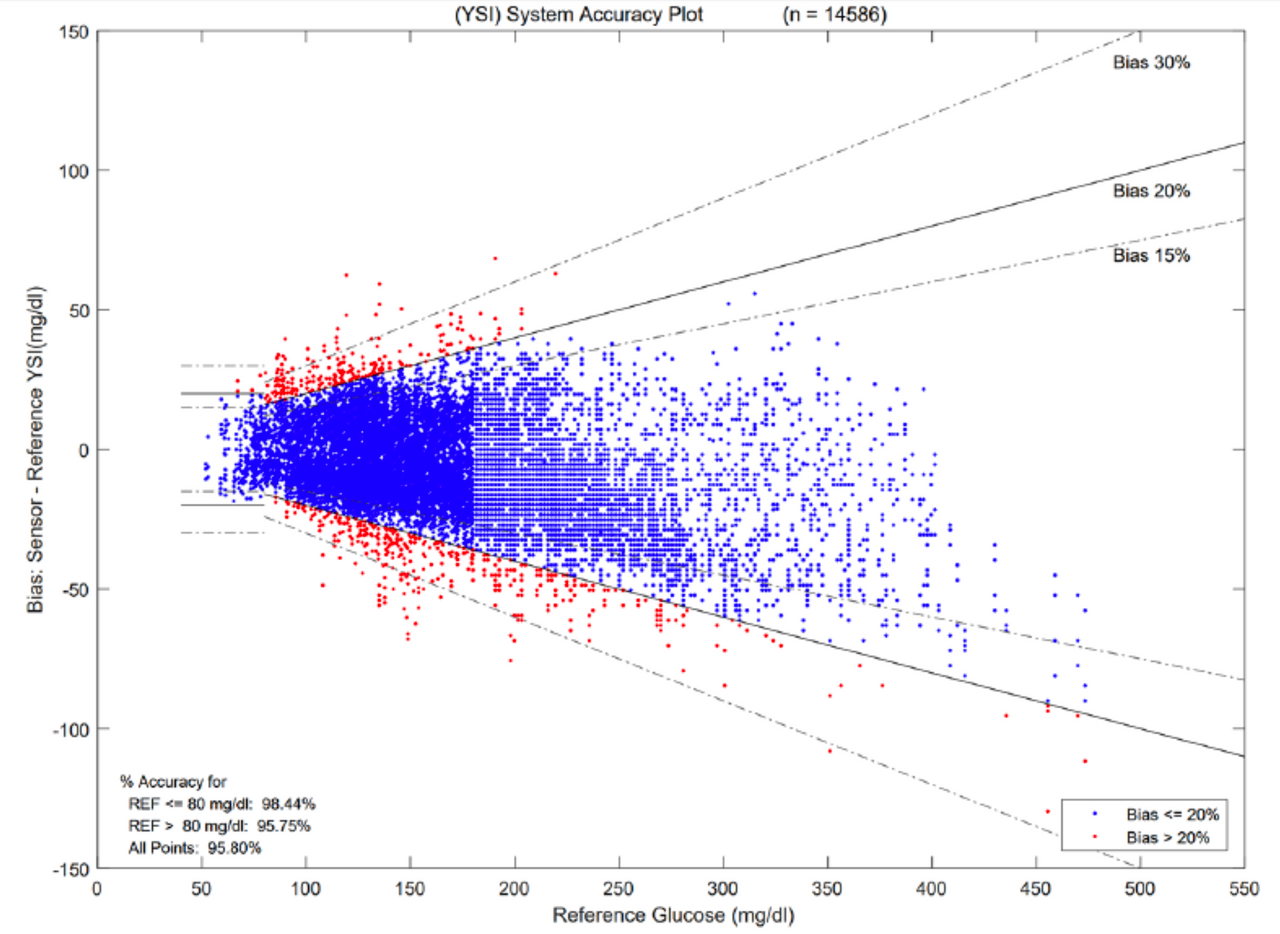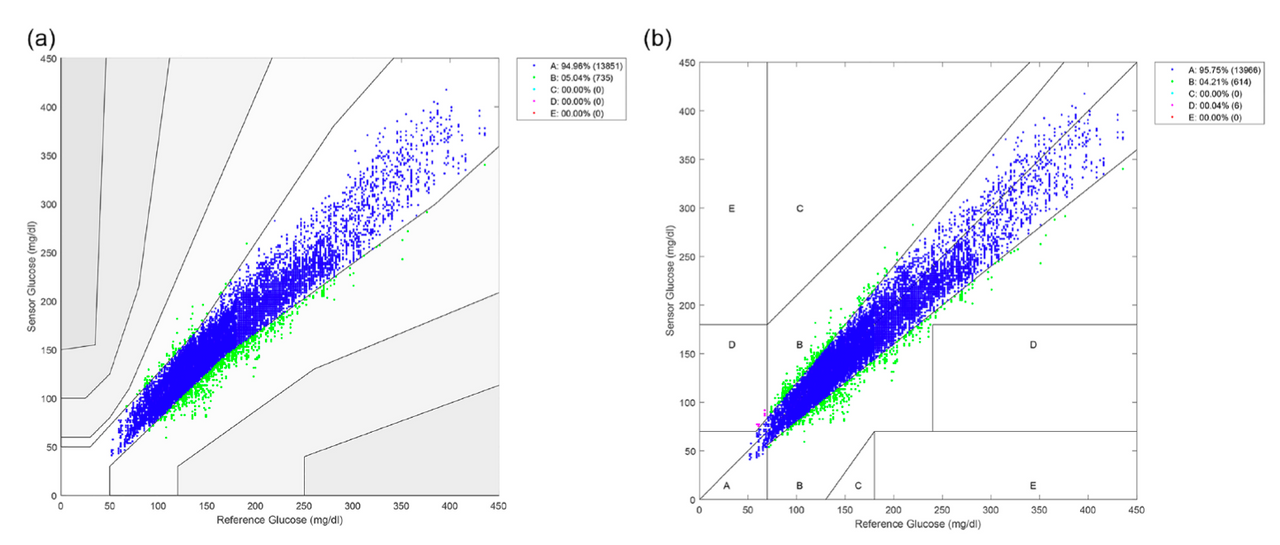6th lesson - How much AiDEX CGM system is accurate ?

AiDEX is a real-time glucose monitoring system (RT-CGM) with four predefined alerts, a calibration free sensor and 14 day long wearing electrochemical sensor.The following will shed some light on how much AiDEX is accurate. It is very helpful to read it.
The system consists of three components:a single-use glucose sensor pre-assembled into a sensor applicator which can be applied to skin through one simple action, a reusable transmitter (4 years) and PDA (personal diabetes assistance) or Mobile application, And the system report glucose readings every 5 minutes.
Accuracy evaluation: multi-center prospective clinical study.1


And the results of 15/15%, 20/20%, 30/30% agreement analysis is 95.8% ( detailed in above table) of the total sensor readings were within ±20 mg/dL or ±20% of venous YSI reference values(2) .
In regards to the Error Grid Analysis (EGA). Typically, two types of error grids are used. These are the consensus error grid(5) (Chart a) and the Clarke error grid(6) (Chart b).

Conclusion and Recommendations:
In this prospective, multi center study, a 14-day use factory calibrated real-time AiEX continuous glucose monitoring system was evaluated in diabetic populations ( Type 1 and 2). The performance of the system was established by its accuracy across all clinically relevant glucose ranges with respect to reference measurement.
- If you are new to AiDEX, it is recommended to set your alarms level between 80 mg/dl (low) and 200mg/dl (High), Later within 4 to 6 weeks you may change your target to be Low (70 mg/dl ) and High (180 mg/dl).
- There were no significant differences between sensor accuracy at different wear locations. It is recommended that the sensor be installed in the abdomen. This is not related to sensor accuracy, but rather to keeping the sensor sticky to your body for the entire 14-day sensor life.
- Sensor accuracy was conducted for Day 2 to 14.
References:
(1) Ji L, Guo L, Zhang J, Li Y, Chen Z. Multicenter evaluation study comparing a new factory-calibrated real-time continuous glucose monitoring system to existing flash glucose monitor- ing system. J Diabetes Sci Technol. Published online August 11, 2021.
(2) International Organisation for Standardisation. In vitro diagnostic test systems – Requirements for blood-glucose monitoring systems for self-testing in managing diabetes mellitus. ISO 15197:2015.
(3) Bolinder J, Antuna R, Geelhoed-Duijvestijn P, et al. Novel glucose-sensing technology and hypoglycaemia in type 1 dia- betes: a multicentre, non-masked randomised controlled trial. Lancet. 2016;388(10057):2254-2263.
(4) HossU,BudimanES,LiuH,ChristiansenMP.Continuousglu- cose monitoring in the subcutaneous tissue over a 14-day sensor wear period. J Diabetes Sci Technol. 2013;7:1210-1219.
(5) Parkes LJ, Pardo S, Slatin SL, Ginsberg BH. A New Consensus Error Grid to Evaluate the Clinical Significance of Inaccuracies in the Measurement of Blood Glucose. Diabetes Care 2000;23:1143-1148.
(6) Clarke WL, Cox D, Gonder-Frederick LA, Carter W, Pohl SL. Evaluating Clinical Accuracy of Systems for Self-Monitoring of Blood Glucose. Diabetes Care 1987;10(5):622-628.


